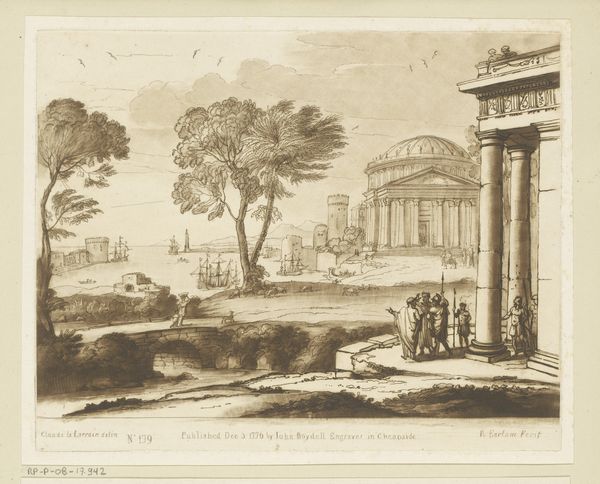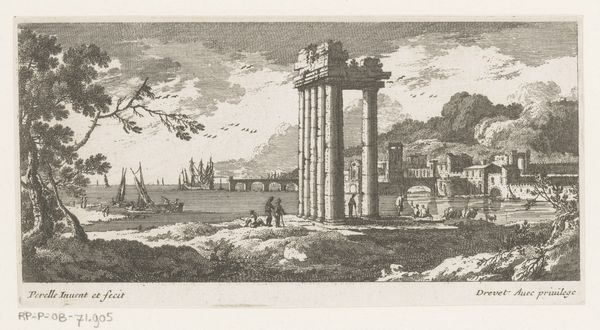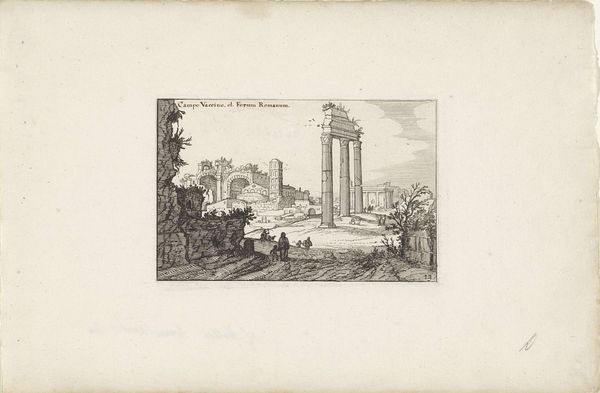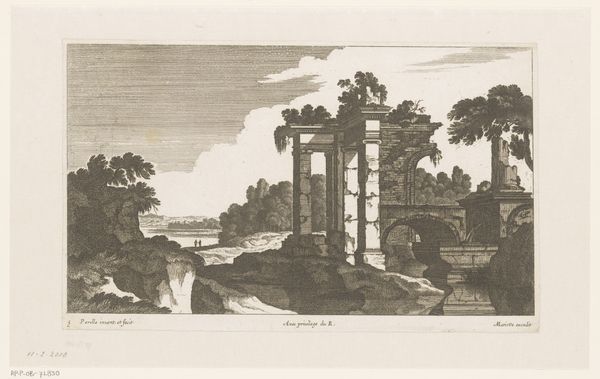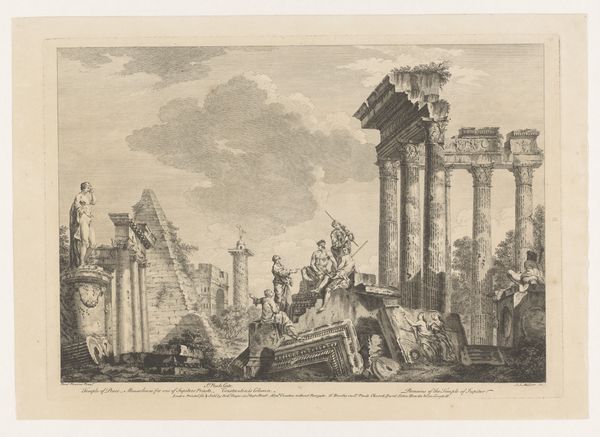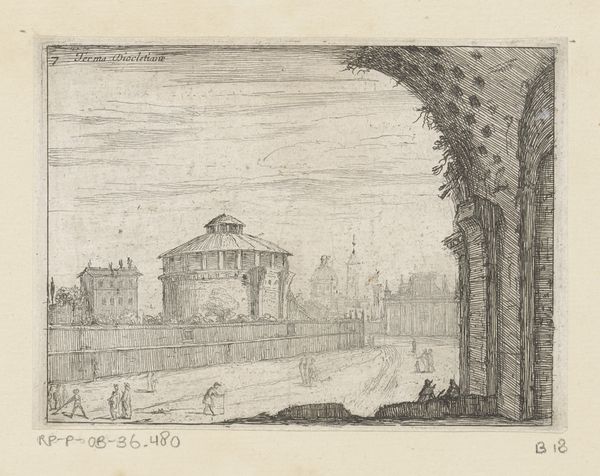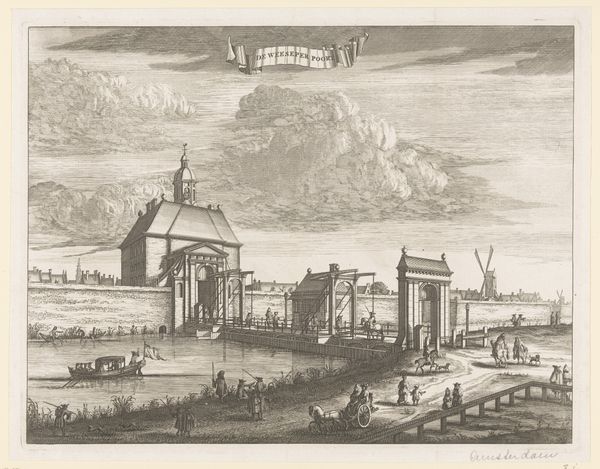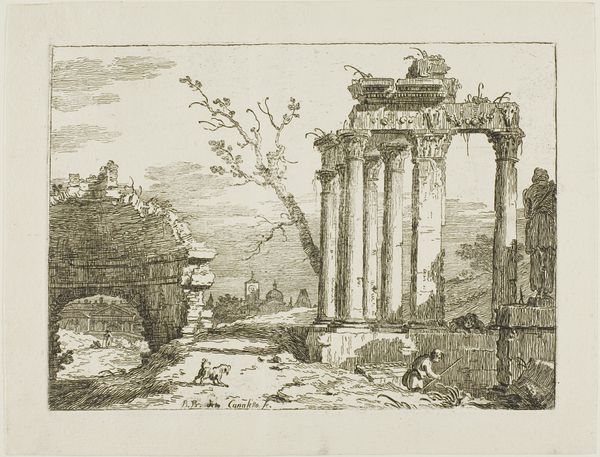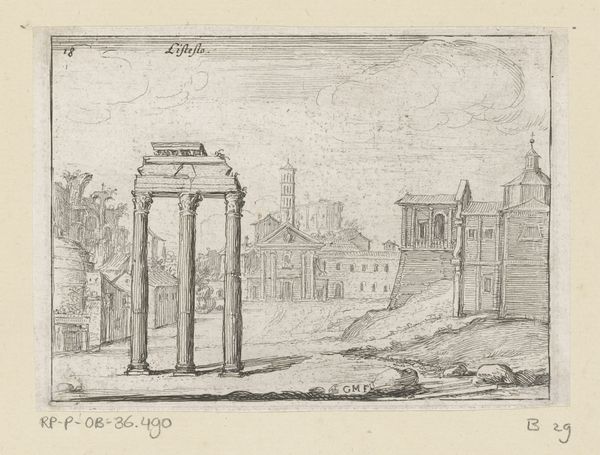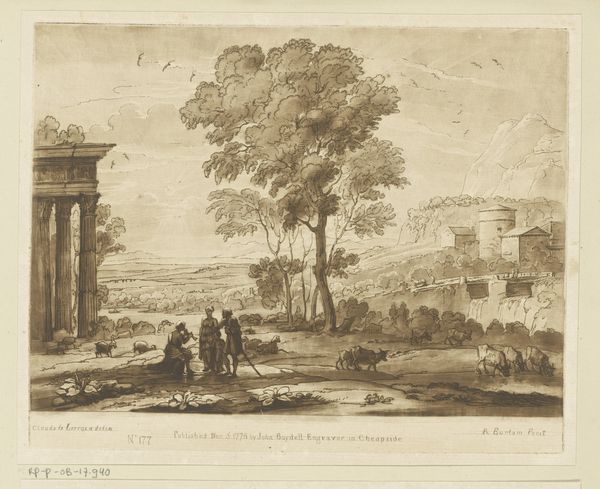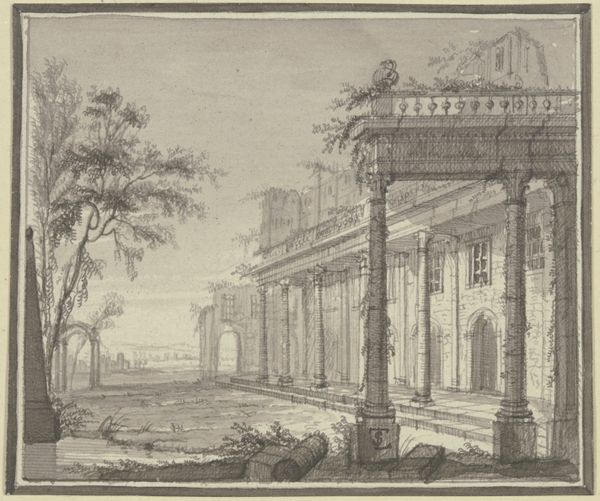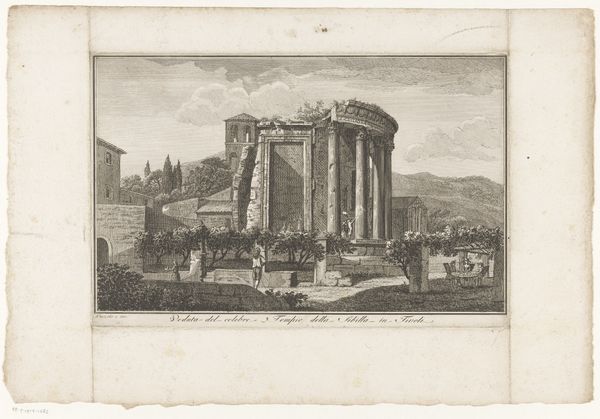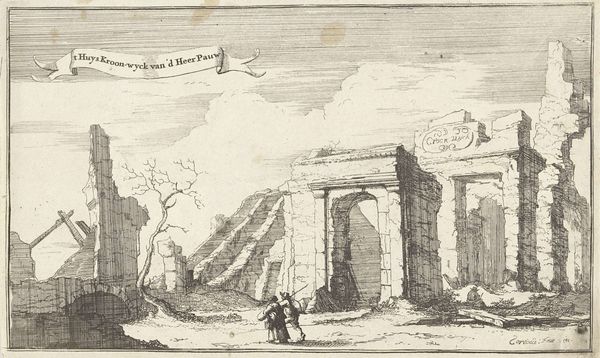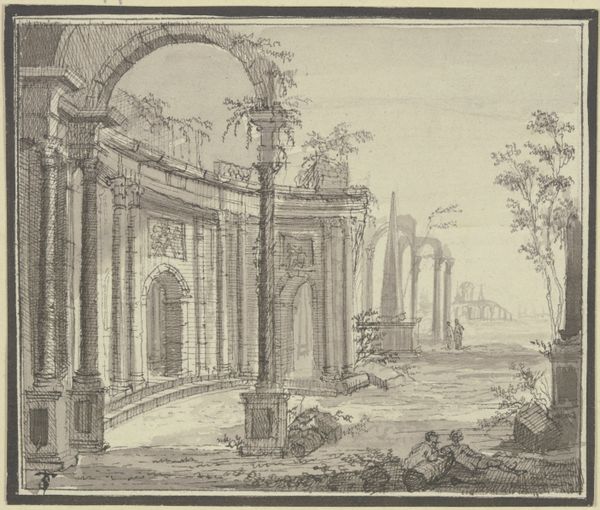
drawing, print, ink, engraving, architecture
#
drawing
#
baroque
# print
#
landscape
#
ink
#
geometric
#
engraving
#
architecture
Dimensions: height 95 mm, width 127 mm
Copyright: Rijks Museum: Open Domain
Curator: Giovanni Battista Mercati created this engraving, titled “Resten van de Tempel van Saturnus op het Forum Romanum te Rome,” in 1629. The image focuses on the remaining columns and partial structure of the Temple of Saturn in the Roman Forum. Editor: It has a haunting beauty to it. The stark lines and the almost skeletal remains of the temple convey a sense of loss, but also enduring strength. There’s a real elegance to the composition, drawing your eye right into the heart of the ruins. Curator: Indeed, the print embodies the Baroque interest in dramatic contrast, visible in its depiction of light and shadow. This print's composition emphasizes a vertical thrust, contrasting with horizontal elements to create a complex visual rhythm. The artist utilizes line variation and tonal contrasts to define architectural forms, emphasizing the ruin's monumentality. Editor: Beyond the sheer aesthetics, think about how this image engages with Rome's history. It speaks to a time when the city's grandeur was visibly eroding, morphing into a melange of ancient ruins integrated into contemporary urban life. Consider what the Temple of Saturn represented, both economically and religiously, and then see it here—reduced. The foreground scene, including the laborers, brings this to light as it tells its own story, of everyday life encroaching upon these once sacred grounds. Curator: I concur. This interplay signifies an evolving societal viewpoint. The focus isn’t strictly on chronicling the temple. Rather, its presence creates a juxtaposition with everyday existence. Consider the meticulous lines illustrating decay and the human element included in the foreground, indicating how history intersects with everyday realities. It’s a detailed semiotic framework showcasing themes about mortality and shifting importance through spatial association. Editor: Precisely. And Mercati's choice of rendering—the stark contrasts of the engraving medium—enhances the theme. This work speaks of impermanence while using enduring lines. Curator: Studying this work, I am reminded of the beauty derived from strict application of technical prowess meeting symbolic depth; indeed, it speaks about human relationship with change. Editor: And it leaves one with a haunting consideration for both the past and present. A ruin isn't just a visual reminder of what was, but is an active space, lived in now.
Comments
No comments
Be the first to comment and join the conversation on the ultimate creative platform.
